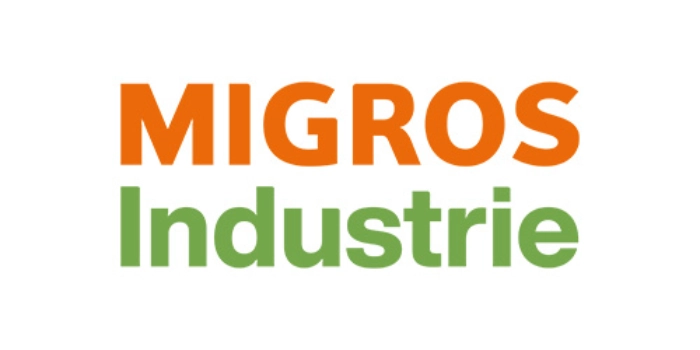
Output management is communication well thought through
Output management is communication well thought through
The digitalization of our daily lives is changing communication in particular. Communication is becoming faster, shorter, and more direct, and is seeking out new channels and forms. Over the next decade, insurers still have to use all channels - letter, fax, e-mail and chat. They need a website as well as the printed brochures for the local broker, online forms along with the paper version. But despite all the new forms of media and channels, language remains crucial in dialog with customers.
Companies that ignore these developments in language and channels risk their long-term economic success.
For insurers, three key strategic questions arise:
- What is my customer’s preferred means of communication today - and tomorrow?
- What preferences do my customers have when it comes to communication?
- How do I efficiently ensure target group-oriented communication across all channels?
Together with you, we answer these questions. With over 20 years of experience, more than 100 specialists and a close-knit partner network, msg is the leading IT service provider in the field of output management. We support you throughout the entire process chain with our industry and technical expertise.
Do you have any questions?

Different customers - different requirements

Has a laptop and a smart phone. “My son picked them,” he says. At least he can write e-mails and make phone calls with them. Most of the time, anyway. But his favorite reading remains the book - next to the daily newspaper. He saw his insurance broker grow up - a friend of his son. The broker also helps him with incomprehensible letters. He doesn't care if they come by e-mail in the future. After all, they can be printed out.

Lives, buys and communicates online. Ever since she can remember. She takes notes in lectures on a laptop and has little time for books. The last time she went into a bank she was ten years old - for the "kid’s savings account". She’s at a loss when it comes to letter mail - there’s no filing tray. So, the letters from her health insurance company are regularly lost at her place. She's fine with messengers and chatbots, but wary of the idea of having to meet or talk to a broker on the phone.

Desktop computer in the office, laptop at home. For online shopping, for train tickets. She hasn’t got a home office, but the private filing tray works just fine. Even though it eats up space. She likes to receive mail in the mailbox at the front door. Probably out of force of habit. With e-mails, on the other hand, she sometimes loses track. “Maybe I need a better system,” she says.

Fascinated by technology. Not just by large machines, but also by state-of-the-art smartphones. He’s on board with every trend - it goes without saying. Netflix has long since replaced linear TV for him. He’s taken out car and liability insurance online, but all other policies in the "classic” way. Regular insurance mail piles up on his desk - read, but never sorted. “I’ll get round to it someday,” is the excuse. He’d prefer e-mails. Or a message on “Signal”.
What requirements does a modern output management solution meet?
- Recipient-oriented wording
- Reaching customers on the right channel
- Standardized interfaces and modular architectures on flexible platforms
- Simple and intuitive letter writing for the clerk
- A high degree of automation
- Simple text maintenance for and by the specialist departments
And what does the future of communication look like for insurers?
The future is hybrid. At least for the next decade. Digital and paper-based communication exist in parallel. However, the answer to the question of the future of output management is not just a technical one. The tasks for insurers are broader:
Communication should be viewed holistically and as a continuous cycle of interaction between customers and the company. Every communication from the insurer impacts overall satisfaction and customer experience.
Improving existing texts and aligning them to target audiences is just one component of the communication strategy. Here, the "user experience" is the key driver. Questions like "How is the company perceived as regards its communication, which communication is seen as positive, which as negative, how are changes in communication media format perceived?" are more essential here.
Mandatory requirements already exist for the public sector; these are to be expected and desirable for the private sector.
Society's expectation of dialog with insurers has changed. In the days of the letter, with its often highly technical content, response times of several days were acceptable. Not anymore. Not only has the letter been superseded by e-mail, but other topics are taking center stage too.
With the triumph of online commerce, combined with tracking of shipments and precise status tracking, banks and insurers have lost their role as drivers of this expectation. It has long since been shaped by the performance of online retailers and platforms such as Amazon, eBay, Uber, for example. In the electronic dialog, they have long expected a just-in-time response - and are extending this to other sectors of life.
One approach that financial service providers are taking is to optimize processes by minimizing manual activities, increasing automation levels, and communicating more digitally.
The key paradigms of modularization are loosely coupling components, defining clear data and logic layers in the architecture, and avoiding business logic in the text-generating and processing systems. In the case of e-mailing, for example, the dedicated separation of business and document/dispatch logic means that the preparation of the final dispatch format is decoupled from the creation of the business content simply by passing on meta information (dispatch route = mail and the mail address). Enhancements or adaptations of existing dispatch channels can thus be carried out centrally, quickly and cost-effectively, irrespective of the subject matter.
Use the potential for your digitalization and communication strategy
1. High standard in communication
Address your customers in a targeted and consistent manner –
regardless of the number of your systems and possible transformation phases.
2. Cost reduction
Cost transparency in the industry is currently low.
Designing your systems to meet demand creates clarity and enormous savings potential.
3. Automation and AI
Automation and AI are essential factors for low costs, customer-friendly service and high quality.
To date, these methods have been little used in the industry.
4. Service optimization
Take as much responsibility as you desire, thus optimizing service and quality.











